Best Diabetic Cat Food
Contents of Article
The exact cause of diabetes in cats isn’t known but it seems to affect overweight and obese cats more than other cats. This is probably because being overweight makes the body less sensitive to insulin’s effects. Diabetes is also more likely to occur in older cats – which are also more likely to be overweight.
If your cat is diagnosed with diabetes it is usually a frightening time for an owner. Symptoms typically include lethargy, increased urination, increased thirst, and loss of appetite. Your cat’s urine may be sticky to the touch because it literally contains sugar excreted from his body. Left untreated, diabetes can become life-threatening. However, many cats have diabetes and live long, happy lives with proper management. Following your vet’s diagnosis, you will probably have to give your cat regular doses of the hormone insulin to help control his condition. Feeding your cat a diet suited to his condition can also help manage his diabetes.
Quick Look : Top 4 Best Diabetic Cat Foods
| Food | Price | Nutrition | Rating |
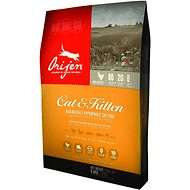 Orijen Cat & Kitten Dry Food Recipe (Dry) Orijen Cat & Kitten Dry Food Recipe (Dry)Read Reviews |
$4.92/lb |  |
 |
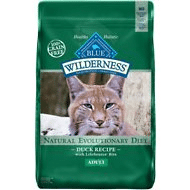 Blue Buffalo Wilderness Adult Duck Recipe Cat Food (Dry) Blue Buffalo Wilderness Adult Duck Recipe Cat Food (Dry)Read Reviews |
$2.94/lb |  |
 |
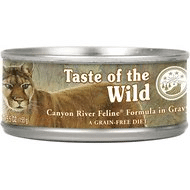 Taste of the Wild Canyon River Feline Formula (Canned) Taste of the Wild Canyon River Feline Formula (Canned)Read Reviews |
$1.29/5.5 oz can |  |
 |
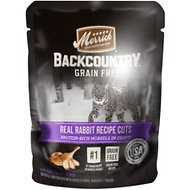 Merrick Backcountry Real Rabbit Recipe Cuts Wet Food Merrick Backcountry Real Rabbit Recipe Cuts Wet FoodRead Reviews |
$1.25/3 oz pouch |  |
 |
Feeding the diabetic cat
You probably already know that cats require meat in their diets. They need more meat and protein than dogs and they are not as good at breaking down carbs and starches as dogs. This is even more true when it comes to diabetic cats. Their bodies have greater difficulty moving sugar/glucose from the bloodstream to distribute it to the cells in the body. This is why sugar builds up in the cat’s bloodstream and can become harmful. As you might guess, it makes sense to feed a diabetic cat a diet that has less starch in it so it won’t break down into more sugar/glucose.
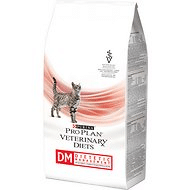
According to the latest research, diabetic cats can benefit from diets that are high in protein and fat and low in carbohydrates. Kitten foods (especially canned kitten foods) can supply high protein and fat for this kind of diet. You can also find really good new diets today that have been made especially for diabetic cats such as Purina ProPlan DM Dietary Management Feline. (Don’t look too closely at the ingredients with prescription diets. You probably won’t like some of the ingredients. But prescription diets are often very effective. They are often a food of last resort for some owners and their pets.) Some vets may also prescribe a starch blocker called acarbose to help prevent or slow your cat from digesting the starches in their diet. This drug requires a veterinarian’s prescription. Cats fed a high protein/low carb diet that take acarbose can often discontinue their insulin injections (under their vet’s guidance), or have their diabetes regulated on a lower dose of insulin.
If you are interested in following a high protein/low carb diet for your diabetic cat, most people recommend that you feed canned cat food. They have always had higher protein and fewer carbs than dry cat food.
Semi-moist cat foods are not recommended for diabetic cats because they often contain high amounts of sugar.
Alternate diet
There is another diet for diabetic cats but it is not as popular as the high protein/low carb diet. This is a high fiber diet. Cat foods that have lots of fiber can slow the absorption and metabolizing of glucose and fat in the cat’s body. The glucose in the food won’t be absorbed as fast from the digestive track. This means that the cat doesn’t experience a glycemic high in his blood glucose level soon after eating. This diet can also help an overweight or obese cat lose weight. Unlike some of the high protein/low carb diets that are high in fat, high fiber diets are lower in fat and the fiber is filling. The cat feels full without eating as many calories. It is important for a high fiber diet to contain large amounts of complex carbs. Complex carbs break down slowly – again avoiding a spike in the blood sugar – but they continue to help the cat remain full and satisfied. A high fiber diet can help decrease a diabetic cat’s insulin requirements. However, there are some drawbacks with these diets. Since they contain so much fiber, they tend to produce flatulence. They also tend to increase the amount of stool the cat produces, as well as the number of bowel movements. Finally, a high fiber diet is sometimes not as palatable to a cat as a high protein diet. But they are another option to consider, especially if your cat has other health problems that might preclude being able to eat a high protein/low carb diet for some reason.
Changing your diabetic cat’s diet
It’s important to work closely with your vet if your cat has diabetes. The type of insulin your cat takes, the dose, and how often he gets his dose are determined by a blood glucose profile for your cat while he is eating a specific diet. If you change his diet, the blood glucose profile will also change. This means that your vet will need to make adjustments in your cat’s insulin dosage. Even if you just change your cat’s diet from wet to dry it could make a big difference in his blood glucose profile. You should also let your vet know if your cat is not eating well or doesn’t like the food you are feeding. Please be sure to discuss changes to your cat’s diet with your vet and let him or her know about any changes you plan to make to the diet. It’s very important to keep your cat’s insulin dosages adjusted correctly.
Weight and the diabetic cat
Most diabetic cats are overweight and can stand to lose a little weight. However, there are some diabetic cats that are underweight. This can occur if they have had diabetes for some time and the condition has gone unnoticed and untreated. In either case, you can manage your diabetic cat’s diet to help him get to a healthier weight.
Diabetic cats usually have the same calorie needs as other cats. If your cat is overweight or obese, the calorie intake per day can be reduced by up to 25 percent, after talking to your veterinarian. It is important that you do not try to make your cat lose more than 2-3 percent of his body weight per week. This may not seem like much but it is a lot to a cat that only weighs a few pounds. Slow, steady weight loss is better than making your cat feel hungry all the time by cutting his food or calories too drastically. In addition, rapid weight loss can result in a condition called heptatic lipidosis. This is a condition in which a large amount of fat collects in the liver and the liver stops functioning normally. It can be fatal. So, aim for slow weight loss for your diabetic (or any) cat. As your cat loses weight, your vet will also need to reduce the insulin dosage. If your cat is underweight, you can feed a cat food that is higher in calories to help him gain weight. Again, slow weight gain is better than trying to make your cat gorge.
How to feed the diabetic cat
Since diet and insulin are closely related, your vet can benefit from knowing your cat’s eating habits when he or she starts your cat’s insulin regimen. Most cats with diabetes are fed on one of two schedules.
If you normally feed your cat two or three meals per day, you can probably continue on this schedule. In this case, you will probably give your cat insulin twice per day, at 12-hour intervals, when you feed your cat. It is important that you give your cat his insulin about the same time that he eats. Otherwise his blood glucose level can get too low. If your cat is a picky eater you may need to feed your cat just before it is time to give the insulin injection. In this case, if your cat won’t eat, you can call your vet and he or she may suggest that you wait to give the injection or make the dose smaller.
If you free feed your cat and he is used to eating small amounts whenever he wants throughout the day, you can probably continue to do so. You may need to vary the type of insulin administered, the dosage, and how often you give the injection. Talk to your vet about how to work with this feeding method.
As you can see, it’s more than possible to use your cat’s diet as a way to help control your cat’s blood glucose level if he has diabetes. You can also help your diabetic cat get to his ideal weight. Most people recommend a high protein/low carb wet diet for diabetic cats today but you can also feed a high fiber diet if that would be better for your cat for some reason. Remember that changing your cat’s diet in even small ways can change his blood glucose profile and affect the insulin dose he needs. Work with your veterinarian to manage your cat’s diabetes.

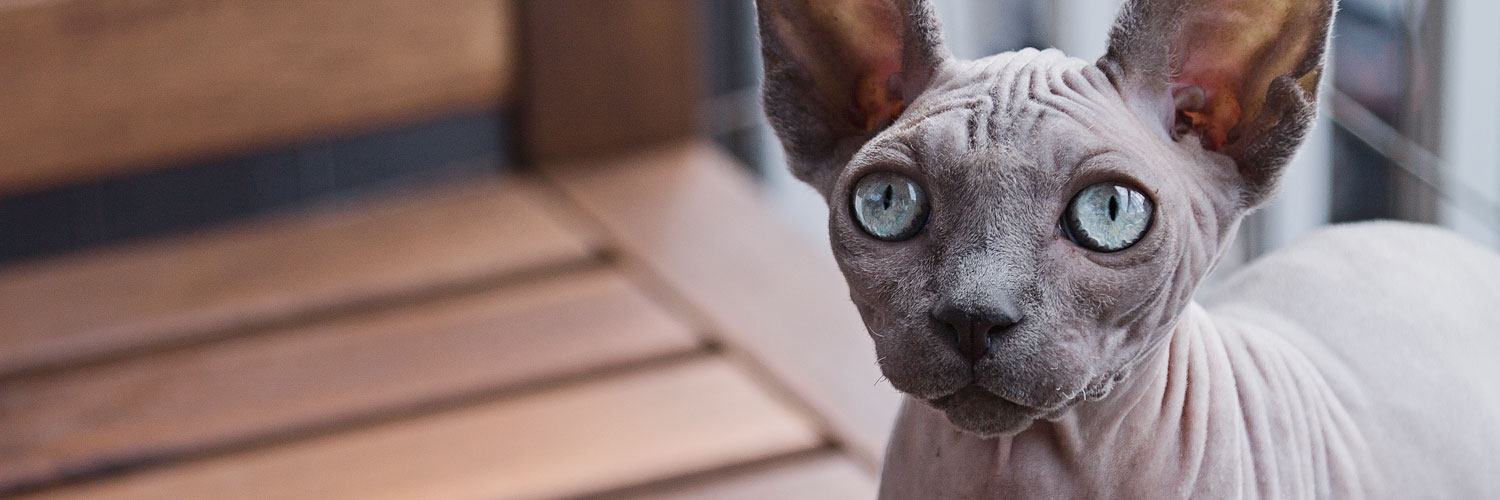
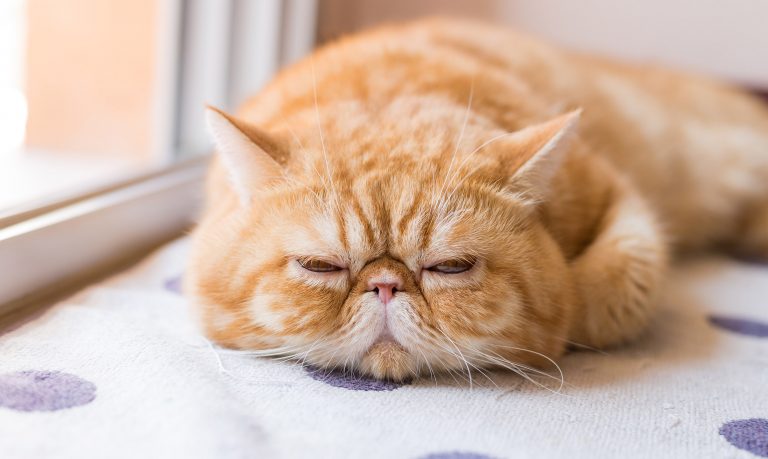
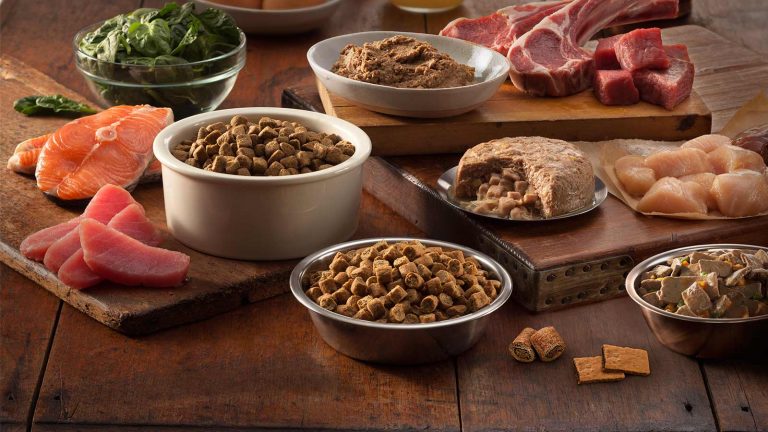
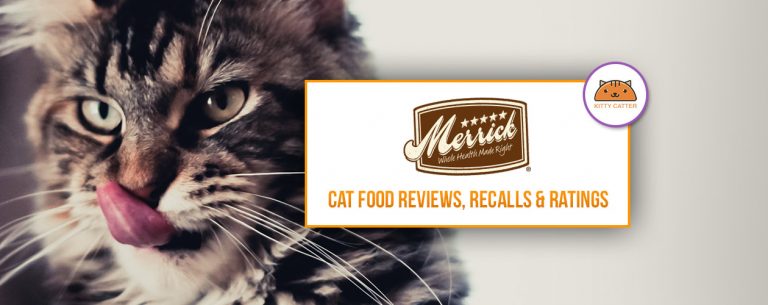
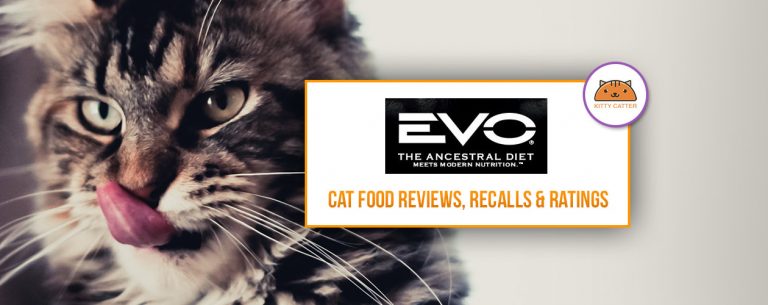
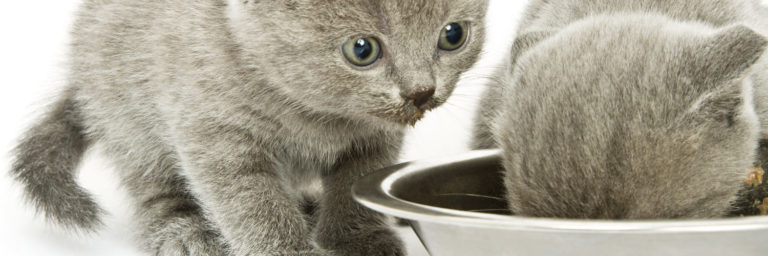
Diabetic cats should not eat dry food. They all use one ingredient or another as a binder that is not good for diabetics. Your best bet is to switch to low-carb canned food and it doesn’t have to be the expensive foods. Friskies Pate or Fancy Feast Classic is just fine.
Agreed, Autumn. No dry food and no wet food with gravies.
I keep trying to add variety to our girl’s diet with more expensive brands but she ends up preferring Fancy Feast pates. Well, most of them.
My 19 year old cat was just diagnosed with diabetes and has eaten Friskies pate her whole life! Now we have to change.
The fact she’s 19 and JUST got diabetes means eating The late stalled the diabetes…wish I had fed mine that instead of the gravy ones..she has diabetes and is only 12
Friskies pate is probably higher in carbs, fancy feast classic works great for my diabetic cat that is now in remission.
My 10 yr old neutered black rescued cat is now in a vet hospital with acid Kyoto‘s is due to being “hi”” his diet was change from Purina wet food to variety pack whole tree hill country fair cat dinner canceled 100% complete for growth and maintenance for two months. Could this have something to do with it. He is also on three units Of insulin, twice a day.
Our cat has recently been diagnosed with diabetes. I’ve been researching the best food for him and I came across your info. I’m quite surprised that your number one suggested food is Orijen. It’s ratings have gone down drastically since it’s manufacturing was moved from Canada to the U.S. What are your reasons for promoting this food line?
I’m assuming this is an older blog post – since now all the scientific and nutrition research comfirms dry food must not be fed to diabetic cats (none not even the most expensive dry food) – it’s like feeding a human diabetic cookies and donuts – they should only be fed canned low carb food with no gravy (also not good for any cats – all cats should eat canned food – or home made with vet approved recipes). Please update your advice to readers 🙂